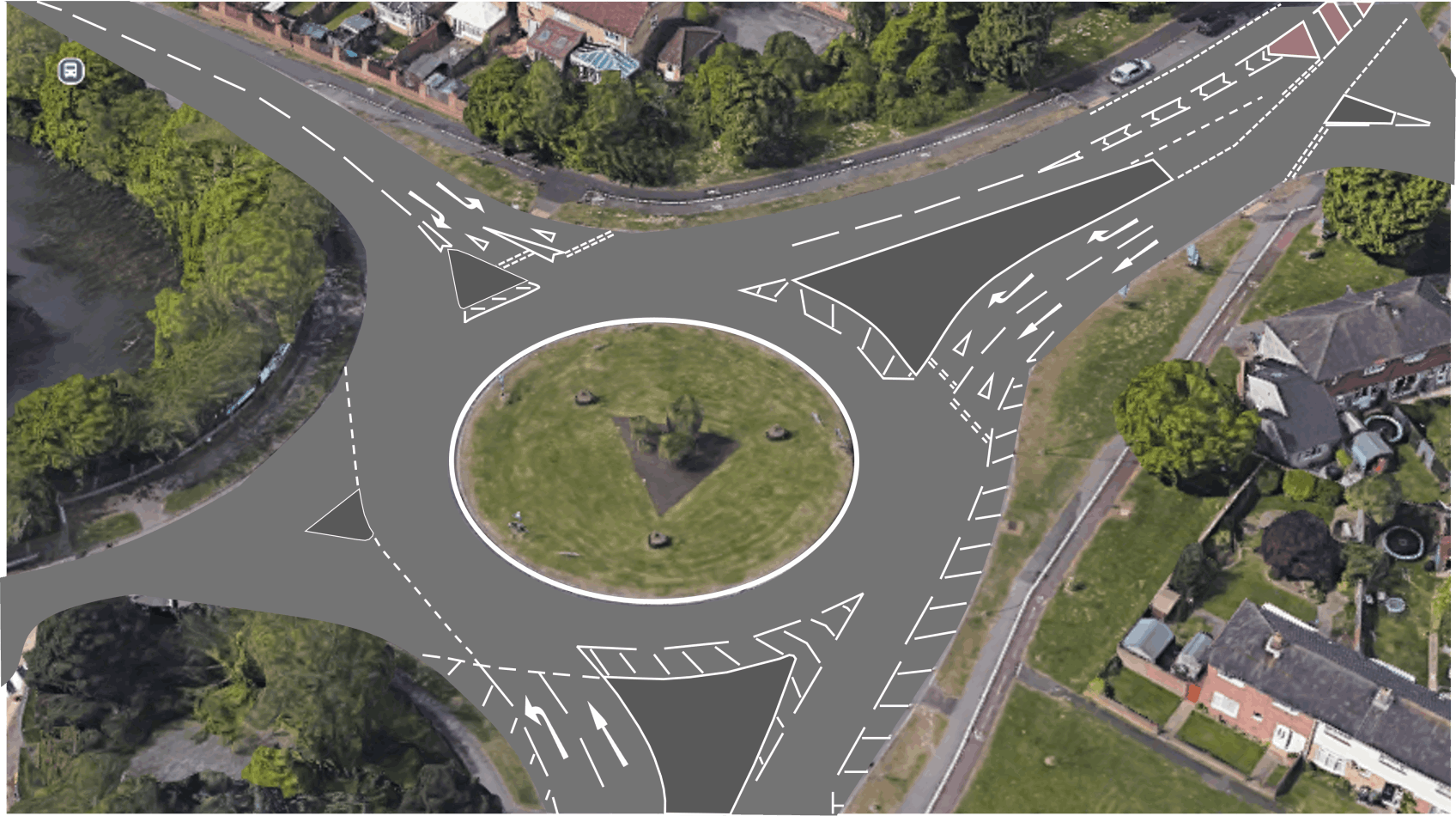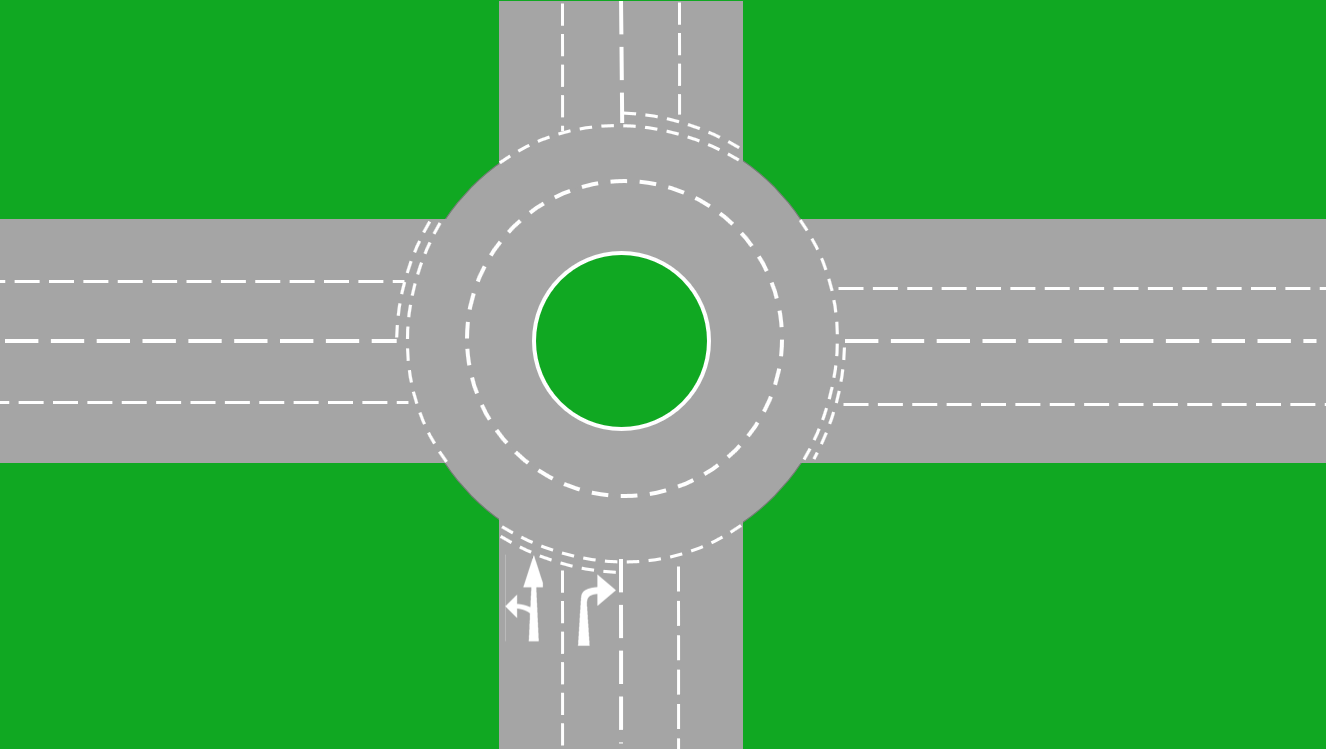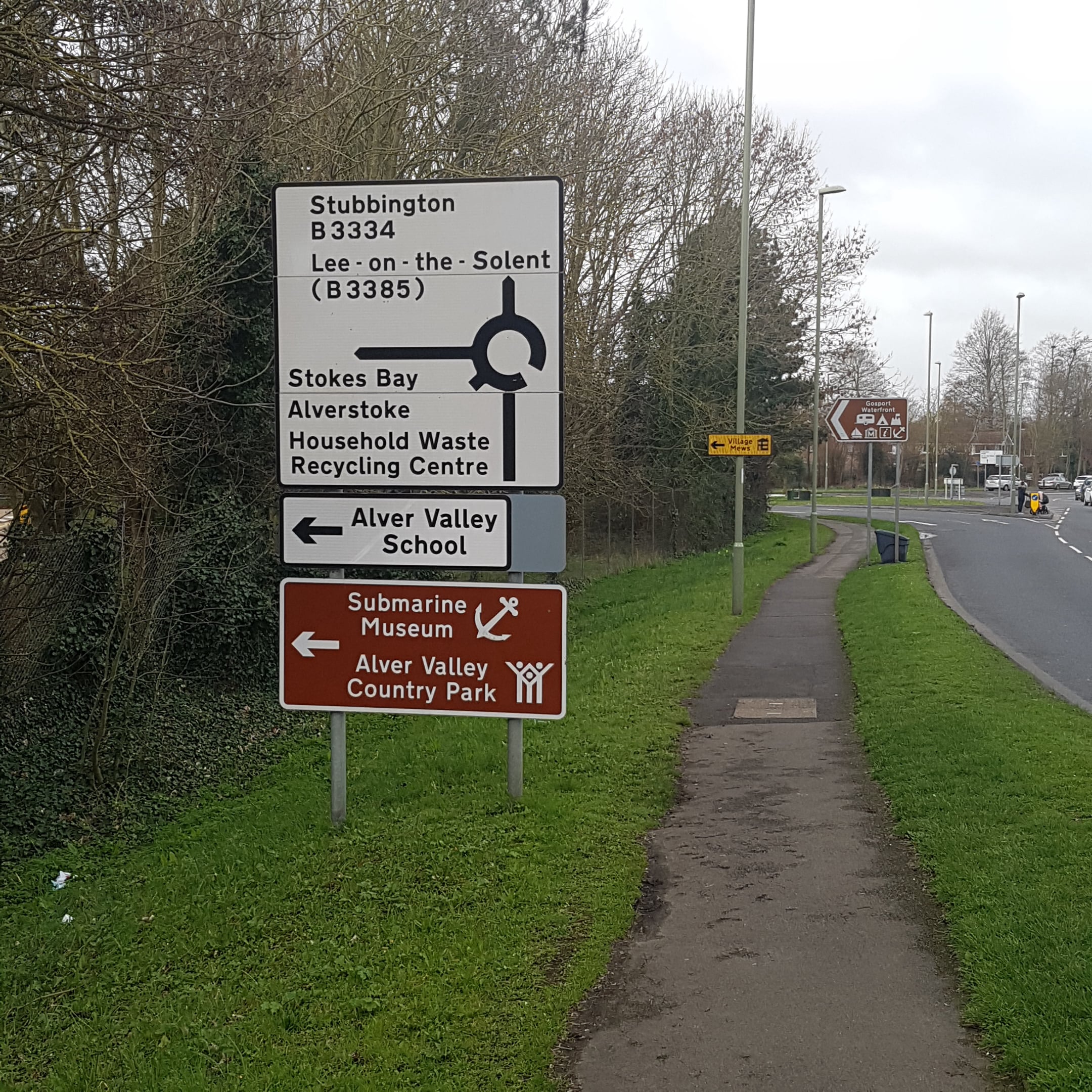Standard
Roundabouts
Traditional Standard Roundabouts usually have a
single or dual lane approaches.



WHY?
Well, firstly, they tend to have much more open space around them and are bigger, which makes seeing approaching traffic, their signal and approach speeds and lane of approach, much easier to work out.
The downside with them until you understand the "Language of Roundabouts" is:-
Making sure you arrive in the correct approach lane.
They are harder to enter if you need to come to a stop.
They tend to hold larger volumes of traffic.
Open Roundabouts can carry faster speeds.
ROUNDABOUTS have what we call "DEFAULT APPROACHES"
As a rule, if there were two approach lanes you would normally consider using the left lane to turn left and follow the road ahead, and the right lane to turn right.
However, that being said, sometimes the left lane may be only left, or both approach lanes could be used for going ahead.
The best way to deal with them is ALWAYS think of the default situation as you approach, but then look for any road markings or signs that may tell you differently.
AGAIN, as with all Roundabouts,
PRIORITY IS ALWAYS GIVEN TO TRAFFIC COMING FROM YOUR RIGHT.
When looking at Roundabout signs on the approach, the way that the sign is painted is to allow you to make the decision to what approach lane you need to be in.

When you are approaching a roundabout with a direction sign, you are always approaching from the line at the bottom of the sign.
Think of the circle of the roundabout as a clock face. The very top is 12 O'clock and the bottom is 6 O'clock
So you are always imagining that you are arriving at the roundabout at 6 O'clock no matter what entry point you arrive at.
Then think of any exit point that covers the left hand side of the sign as being considered turning left.
The 12 O'clock point as going ahead.
And any exit on the right hand side of the sign as being considered turning right.
We then number each exit in a clockwise direction.
Therefore the little line pointing at about 7.30 position would be deemed 1st exit turning left.
The Larger line pointing toward 9 O'clock would be deemed 2nd exit turning left.
And the line pointing toward 12 O'clock would be deemed 3rd exit following the road ahead.
How to make arriving, navigating and leaving a Roundabout easy!
On Approach carry out the MSPSGL routine.
1. Check relevant mirrors
2. Signal if necessary.
3. Make your intentions VERY clear and select your correct approach lane early.
4. ENSURE YOU SLOW DOWN!
Whilst slowing, observe your surroundings, traffic coming from your right as well as oncoming traffic approaching the roundabout
(if you can see them, as some standard roundabouts have built up centres with shrubs etc)
5. Based on your effective observations, select an appropriate gear (usually 2nd gear) if you intend to keep going (1st if you intend to stop)
6. Can you adjust your speed to match vehicles already on the roundabout and "fit in behind one of them?"
7. Would it be better to slightly increase your speed and get onto the roundabout before the vehicles coming from your right arrive at it as you already have momentum?
Obviously you do not want to cause another vehicle to have to take evasive action, but if the momentum of your vehicle is such that by increasing your speed you would not affect traffic to your right, then it would make sense to not stop and continue entering the roundabout.
8. Once on the roundabout STAY IN YOUR LANE, drifting lanes is very dangerous especially if you are unaware of vehicles to the sides of you.
9. When you are ready to exit the Roundabout place on a left hand indicator to make others aware of your intentions. Irrelevant of your exit point, you should always place on an exit signal. The only exception to this is possibly on mini roundabouts where steering to control the car would be safer than placing on a signal and losing control of the car.
10. Check to your left to ensure there is no one on the nearside of your vehicle, and then join the new road.
11. Once you have entered the new road, ensure your signal is cancelled and a full observation is made to see who may have followed you into the new road and who may be on your nearside or offside
(motorbikes, cyclists or vehicles attempting to overtake you)
Following these simple rules should keep you safe whilst navigating Roundabouts.
If you have to stop, and traffic coming from the first junction to your right is heavy flow, look out for "Blockers" coming from the second entrance to the roundabout before your immediate right,
What is a BLOCKER?
A blocker is any vehicle that may restrict cars to your immediate right from entering the roundabout, thus giving you an opportunity to enter.
Watch out for their signals to show where they intend to go, this will give you advanced notice (hopefully) to get prepared to move off.
Video Description
Video Description